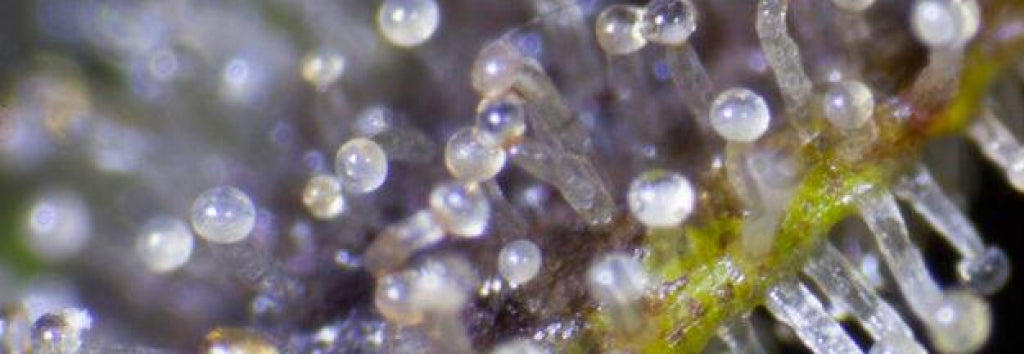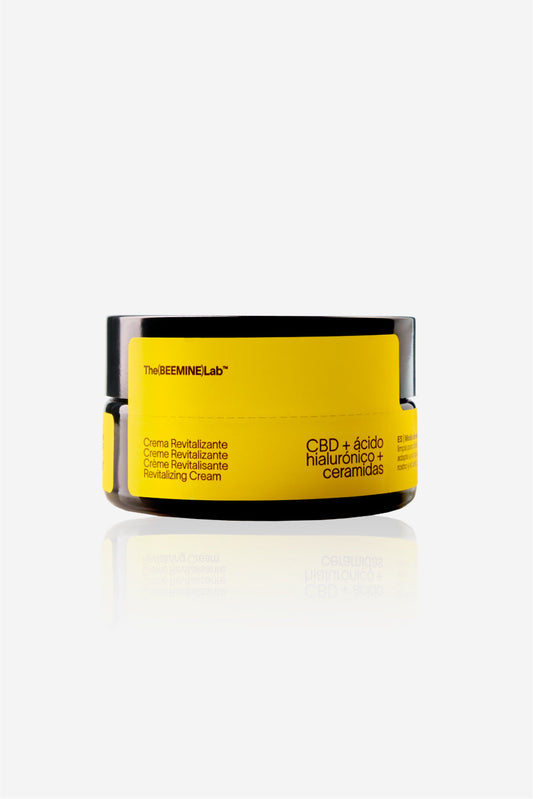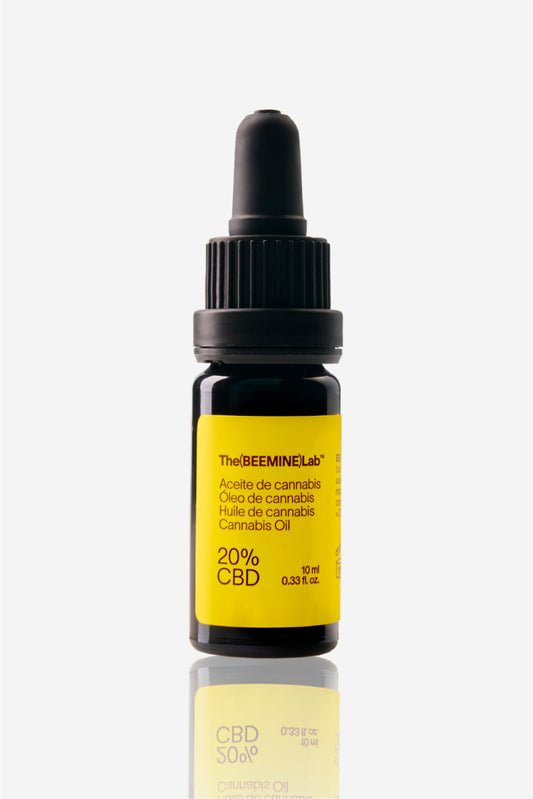What are terpenes?
Terpenes are aromatic and volatile organic compounds present in the vast majority of plants , being responsible for their characteristic aroma, smell and flavor. In fact, there are more than 30,000 different terpenes in nature, making them the largest group of all phytochemicals. The type, quantity and proportion of terpenes present in a certain plant make up its specific essential oil , which will need to be extracted by distillation since, being an oil, it is not soluble in water. For example, lemon essential oil is composed of different terpenes, among which limonene stands out (hence its name), which can be present in many other plants, although in less significant concentrations. Depending on the degree of volatility and the complexity of their structure , terpenes are divided into monoterpenes ( very volatile ), sesquiterpenes, diterpenes, triterpenes, tetraterpenes and polyterpenes ( slightly volatile ). (1-2-3-6-7-8)Terpenes in cannabis
The cannabis plant does not produce exclusive terpenes , all of the terpenes it contains are also present in other plants, which when used together can generate a synergistic effect. However, there are hundreds of varieties of cannabis and each one develops a different mix of terpenes , which characterizes and distinguishes its aroma and its physical and mental effects beyond its phytocannabinoid content.Where are they located, what function do they have and how do they interact with cannabinoids?
Terpenes , like phytocannabinoids, do not perform any vital function for the plant, but rather represent defense mechanisms that perform an adaptive function , essential to ensure its survival under different environmental conditions. For example, one of the most important functions of terpenes and phytocannabinoids is to attract pollinating insects and repel fungi, bacteria and other insects that may be pathogenic. In the cannabis plant , terpenes and phytocannabinoids are two very similar components that are located in structures called trichomes, where they are produced and conserved together in a symbiotic manner. In fact, they share the same development (that is, for a certain period of time they are the same substance) until a point in which they differentiate, with phytocannabinoids representing a true “evolution” of terpenes that occurs only in the cannabis plant. Terpenes and phytocannabinoids are the two main components of cannabis resin and they interact with each other, therefore the type of effect of THC and CBD, both at an experiential and therapeutic level, can vary depending on the type and quantity of terpenes present in each plant . For this reason, there are varieties that provide more relaxing or more stimulating effects, which generally correspond to genetics that are respectively more indica or more sativa, even if they have the same amount of phytocannabinoids. (1-2-3-6-7-8)What terpenes are found in cannabis?
Terpenes can represent up to 10% of the trichome content when the plant is fresh, but due to their volatility and structure, most terpenes (especially monoterpenes) are lost during the drying and curing phases, although with extraction techniques from the fresh plant it is possible to optimize their conservation.Limonene (monoterpene)
Limonene is the second most common terpene in nature , found mainly in citrus fruits such as lemon, orange, grapefruit and bergamot, as well as in some varieties of mint and rosemary. In cannabis , it is a terpene that can be found mainly in sativa varieties and is usually clearly distinguished by its lemony aroma.What medicinal uses can limonene have?
Limonene has excellent immunostimulant properties , as well as having a marked anxiolytic and antidepressant effect and being beneficial for the digestive system , especially in cases of gastro-oesophageal reflux. Limonene also has therapeutic properties if applied externally, acting as an antibacterial and antifungal. Thanks to the presence of limonene, the anxiolytic and antidepressant effects of CBD are highlighted, in addition to increasing its ability to stimulate the immune system and enhance its benefits at a topical level, particularly in cases of acne. (1-2-4-9)Myrcene (monoterpene)
Myrcene is the characteristic terpene of the hop plant , and is also present in some varieties of thyme and mango . Cannabis is a plant with very similar characteristics to hops, so myrcene is widely distributed in many varieties, although in higher concentrations in the more indica genetics.What medicinal uses can myrcene have?
Myrcene has analgesic and anti-inflammatory properties , as well as promoting relaxation and sleep . The presence of myrcene increases the sedative and relaxing effect of both CBD and THC (as can be experienced when consuming cannabis and craft beer), as well as highlighting their anti-pain and anti-inflammatory properties. (1-2-4)Pinene (monoterpene)
Pinene is the most naturally occurring terpene , characteristic of all conifers such as pine, fir, cypress, juniper and rosemary, as well as being present in black pepper and many other plants. In cannabis, it is present in greater quantities in the more indica genetics , although it can be found in many hybrids.What medicinal uses can pinene have?
Pinene is an excellent anti-inflammatory and is also particularly beneficial for the respiratory system , due to its balsamic and bronchodilator effect. An interesting property of pinene is that it stimulates cognitive functions, promoting attention and memory mechanisms. The presence of pinene highlights above all the anti-inflammatory properties of CBD and THC . (1-2-3-6)
Linalool (monoterpene)
Thanks to its relaxing effect on both a mental and physical level , linalool has anxiolytic, sedative and anticonvulsant properties , as well as acting as an anti-inflammatory both internally and externally. These properties fit perfectly with those of CBD, enhancing its benefits against anxiety and stress problems and increasing its anticonvulsant and anti-inflammatory effect. (1-2-3-4-5-6)What medicinal uses can linalool have?
Thanks to its relaxing effect on both a mental and physical level , linalool has anxiolytic, sedative and anticonvulsant properties , as well as acting as an anti-inflammatory both internally and externally. These properties fit perfectly with those of CBD, enhancing its benefits against anxiety and stress problems and increasing its anticonvulsant and anti-inflammatory effect. (1-2-3-4-5-6)Beta-Caryophyllene (sesquiterpene)
Beta-caryophyllene is the characteristic terpene of black pepper , but it can be found in other plants such as hops, cloves and basil. In cannabis it is present in almost all genetics and represents the most present terpene in flowers and dry extracts , since being a sesquiterpene it has less volatility and can be maintained and preserved after the drying, curing and extraction processes.What medicinal uses can beta-caryophyllene have?
Beta-caryophyllene has very peculiar analgesic and anti-inflammatory properties , as it is able to directly stimulate our endocannabinoid system , acting in a very similar way to phytocannabinoids. For this reason, beta-caryophyllene is considered a “mimetic cannabinoid” and if used together, especially with CBD, it is possible to obtain a much more powerful anti-inflammatory effect than using the two substances separately. Beta-caryophyllene also provides many benefits for the digestive system. (1-2-4-10)Eucalyptol (mono-terpene)
Eucalyptol is the characteristic terpene of the eucalyptus tree, the tea tree and many types of rosemary , while in cannabis it can be found in some genetics, especially sativa. Eucalyptol is the only terpene capable of stimulating the Central Nervous System and must be used in small quantities.What medicinal uses can eucalyptol have?
Apart from its expectorant and bronchodilator properties , eucalyptol is an excellent analgesic and anti-inflammatory , highlighting the same properties of both THC and CBD and promoting a more energizing effect. (1-2)Other Terpenes Worthy of Note
Humulene (sesquiterpene)
Humulene or Alpha-Caryophyllene is a terpene characteristic of hops, although it is also found in basil and sage, with anti-inflammatory and antimicrobial properties that are highlighted in synergy with phytocannabinoids.Caryophyllene oxide (sesquiterpene)
Caryophyllene oxide is present mainly in the lemon balm plant and in eucalyptus, with excellent antifungal properties. In cannabis it is present in many genetics, since it is derived from beta-caryophyllene, and represents the aroma that police anti-drug dogs are trained to look for.Nerolidol (sesquiterpene)
Nerolidol is present in some citrus fruits and has relaxing, antimicrobial and antifungal properties that are also very useful for external application, in addition to facilitating the absorption of other components through the skin.Phytol (diterpene)
It is a compound derived from the oxidation of chlorophyll and vitamin E, with relaxing and calming effects. (11-12)How to use essential oils? Recommendations and dosage
Essential oils are generally not applied directly , but are mixed, diluted and used in small, safe quantities to avoid unwanted side effects such as poisoning or skin irritation.- Internal route (ingestion) : The vast majority of essential oils are suitable for human consumption and are used in the food industry as flavourings . Essential oils can be mixed in a fatty medium such as oil or milk or in different types of food, without exceeding the maximum recommended dose of 1-2 drops per day.
- Internal route (inhalation) : Due to their volatility, terpenes can be inhaled both through a diffuser and a vaporizer , always diluted to safe concentrations. It is worth highlighting the high bioavailability of some terpenes such as pinene and limonene, which can be absorbed up to 70-80% through inhalation. (2)
 Literature:
1 - https://www.fundacion-canna.es/los-terpenos
2 - Russo EB (2011). Taming THC: potential cannabis synergy and phytocannabinoid-terpenoid entourage effects. British journal of pharmacology, 163(7), 1344–1364. https://doi.org/10.1111/j.1476-5381.2011.01238.x
3 - LaVigne, JE, Hecksel, R., Keresztes, A., & Streicher, JM (2021). Cannabis sativa terpenes are cannabimimetic and selectively enhance cannabinoid activity. Scientific reports, 11(1), 8232. https://doi.org/10.1038/s41598-021-87740-8
4 - Liktor-Busa, E., Keresztes, A., LaVigne, J., Streicher, JM, & Largent-Milnes, TM (2021). Analgesic Potential of Terpenes Derived from Cannabis sativa. Pharmacological reviews, 73(4), 98–126. https://doi.org/10.1124/pharmrev.120.000046
5 - Peana AT, D'Aquila PS, Panin F, Serra G, Pippia P, Moretti MDL. Anti-inflammatory activity of linalool and linalyl acetate constituents of essential oils. Phytomedicine. 2002;9(8):721–6
6 - Weston-Green, K., Clunas, H., & Jimenez Naranjo, C. (2021). A Review of the Potential Use of Pinene and Linalool as Terpene-Based Medicines for Brain Health: Discovering Novel Therapeutics in the Flavors and Fragrances of Cannabis. Frontiers in psychiatry, 12, 583211. https://doi.org/10.3389/fpsyt.2021.583211
7 - Sommano SR, Chittasupho C, Ruksiriwanich W, Jantrawut P. The Cannabis Terpenes. Molecules. 2020 Dec 8;25(24):5792. doi: 10.3390/molecules25245792. PMID: 33302574; PMCID: PMC7763918.
8 - Booth, J.K., & Bohlmann, J. (2019). Terpenes in Cannabis sativa - From plant genome to humans. Plant science: an international journal of experimental plant biology , 284 , 67–72. https://doi.org/10.1016/j.plantsci.2019.03.022
9 - Anandakumar, P., Kamaraj, S., & Vanitha, MK (2021). D-limonene: A multifunctional compound with powerful therapeutic effects. Journal of food biochemistry , 45 (1), e13566. https://doi.org/10.1111/jfbc.13566
10 - Scandiffio, R., Geddo, F., Cottone, E., Querio, G., Antoniotti, S., Gallo, MP, Maffei, ME, & Bovolin, P. (2020). Protective Effects of ( E )-?-Caryophyllene (BCP) in Chronic Inflammation. Nutrients , 12 (11), 3273. https://doi.org/10.3390/nu12113273
11 – Russo EB (2011). Taming THC: potential cannabis synergy and phytocannabinoid-terpenoid entourage effects. British journal of pharmacology , 163 (7), 1344–1364. https://doi.org/10.1111/j.1476-5381.2011.01238.x
12 - https://eybna.com/terpenes/the-terpiodic-table/
Literature:
1 - https://www.fundacion-canna.es/los-terpenos
2 - Russo EB (2011). Taming THC: potential cannabis synergy and phytocannabinoid-terpenoid entourage effects. British journal of pharmacology, 163(7), 1344–1364. https://doi.org/10.1111/j.1476-5381.2011.01238.x
3 - LaVigne, JE, Hecksel, R., Keresztes, A., & Streicher, JM (2021). Cannabis sativa terpenes are cannabimimetic and selectively enhance cannabinoid activity. Scientific reports, 11(1), 8232. https://doi.org/10.1038/s41598-021-87740-8
4 - Liktor-Busa, E., Keresztes, A., LaVigne, J., Streicher, JM, & Largent-Milnes, TM (2021). Analgesic Potential of Terpenes Derived from Cannabis sativa. Pharmacological reviews, 73(4), 98–126. https://doi.org/10.1124/pharmrev.120.000046
5 - Peana AT, D'Aquila PS, Panin F, Serra G, Pippia P, Moretti MDL. Anti-inflammatory activity of linalool and linalyl acetate constituents of essential oils. Phytomedicine. 2002;9(8):721–6
6 - Weston-Green, K., Clunas, H., & Jimenez Naranjo, C. (2021). A Review of the Potential Use of Pinene and Linalool as Terpene-Based Medicines for Brain Health: Discovering Novel Therapeutics in the Flavors and Fragrances of Cannabis. Frontiers in psychiatry, 12, 583211. https://doi.org/10.3389/fpsyt.2021.583211
7 - Sommano SR, Chittasupho C, Ruksiriwanich W, Jantrawut P. The Cannabis Terpenes. Molecules. 2020 Dec 8;25(24):5792. doi: 10.3390/molecules25245792. PMID: 33302574; PMCID: PMC7763918.
8 - Booth, J.K., & Bohlmann, J. (2019). Terpenes in Cannabis sativa - From plant genome to humans. Plant science: an international journal of experimental plant biology , 284 , 67–72. https://doi.org/10.1016/j.plantsci.2019.03.022
9 - Anandakumar, P., Kamaraj, S., & Vanitha, MK (2021). D-limonene: A multifunctional compound with powerful therapeutic effects. Journal of food biochemistry , 45 (1), e13566. https://doi.org/10.1111/jfbc.13566
10 - Scandiffio, R., Geddo, F., Cottone, E., Querio, G., Antoniotti, S., Gallo, MP, Maffei, ME, & Bovolin, P. (2020). Protective Effects of ( E )-?-Caryophyllene (BCP) in Chronic Inflammation. Nutrients , 12 (11), 3273. https://doi.org/10.3390/nu12113273
11 – Russo EB (2011). Taming THC: potential cannabis synergy and phytocannabinoid-terpenoid entourage effects. British journal of pharmacology , 163 (7), 1344–1364. https://doi.org/10.1111/j.1476-5381.2011.01238.x
12 - https://eybna.com/terpenes/the-terpiodic-table/







